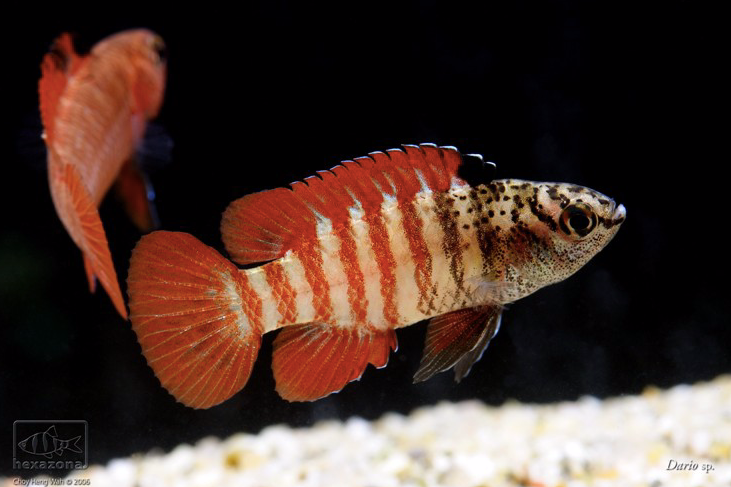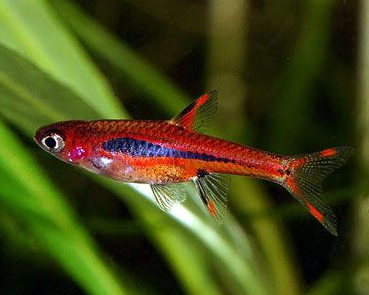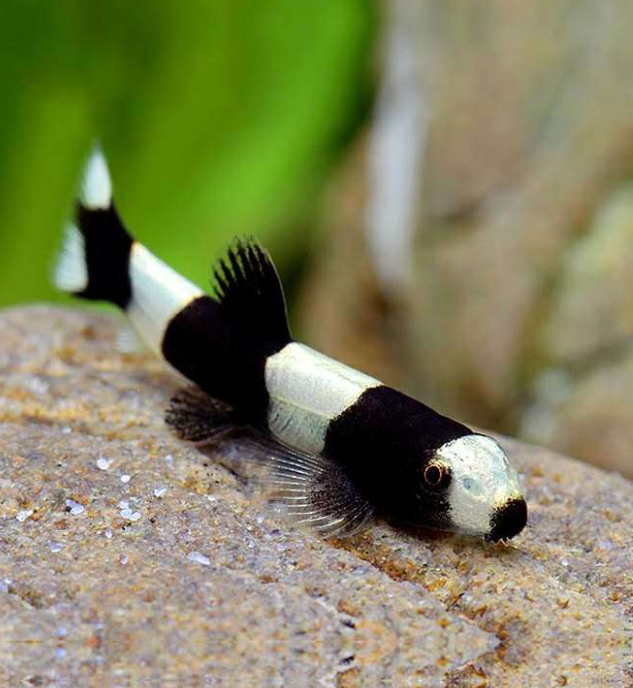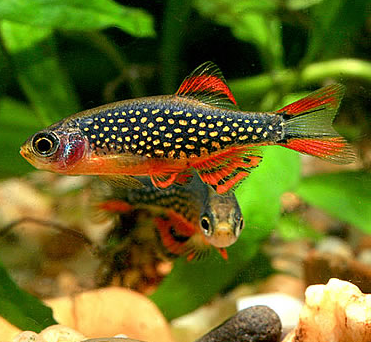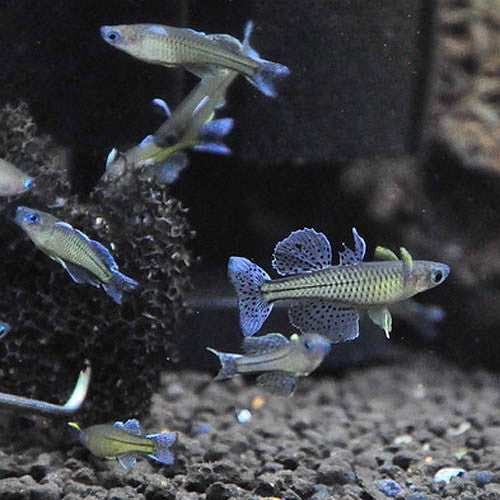Appears endemic to northern Myanmar and possibly to the state of Kachin, close to the city of Myitkyina.
A pair of males from separate localities were included in the type series of D. hysginon (see ‘Notes’) with details given as ‘stream about 1.5 km on road Myitzon-Myitkyina’ and ‘ditch marginal to fish ponds about 40km N Myitkyina, on road to Myitzon’ (Kullander and Britz, 2002).
Best-maintained in a well-structured arrangement with plenty of cover.
A soft substrate is preferable although fine-grade gravel is acceptable, while ideal plants include Cryptocoryne spp. or those that can be grown attached to the décor such as Microsorum, Anubias, or Taxiphyllum species.
The latter is particularly useful as it’s also an ideal spawning substrate, and driftwood branches, floating plants and leaf litter can all be used as well.
Temperature: It is subject to seasonal temperature fluctuations in nature and is comfortable within the range 59 – 77°F/15 – 25°C with even greater extremes being tolerated for short periods.
In many countries/well-insulated homes it can be therefore maintained without artificial heating year-round.
Higher temperatures are known to stimulate spawning activity meaning a heater will be required if you want to breed the fish outside of spring and summer months though. Set it to around 20 – 24 °C for long-term care and breeding.
pH: Prefers neutral to alkaline water with a value between 7.0 – 9.0.
Hardness: The water in northern Myanmar is typically soft despite the relatively high pH so aim for somewhere within the range 18 – 90 ppm.
Dario species are micropredators feeding on small aquatic crustaceans, worms, insect larvae and other zooplankton.
In captivity they should be offered small live or frozen fare such as Artemia nauplii, Daphnia, grindal, micro-, and banana worm.
They’re noted as somewhat shy, deliberate feeders (see ‘Behaviour and Compatibility’) and it’s also important to note that all badids develop issues with obesity and become more susceptible to disease when fed chironomid larvae (bloodworm) and/or Tubifex so these should be omitted from the diet.

